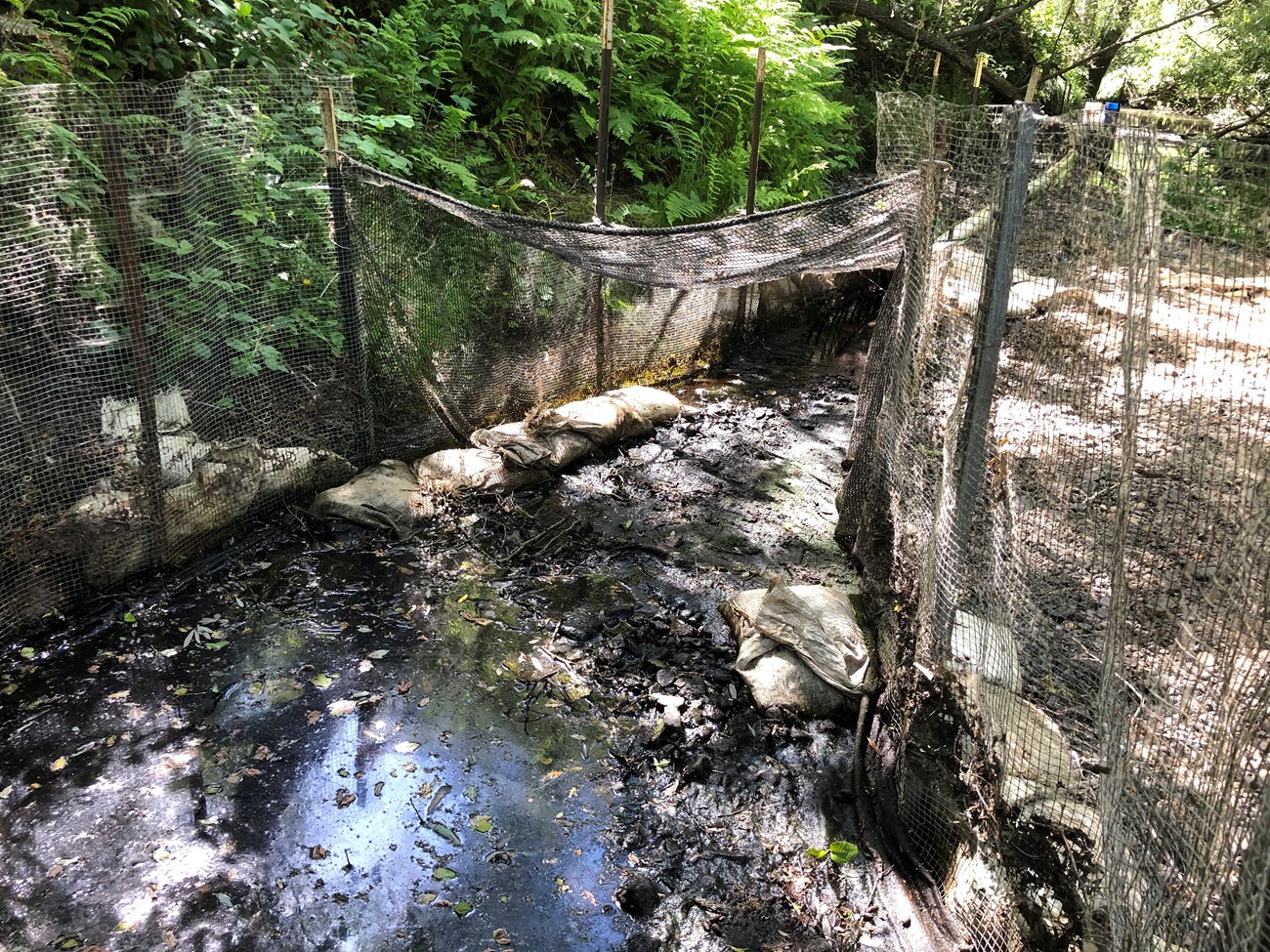Last updated: June 3, 2021
Article
Low Stream Flows Cause Smolt Trapping to End Early

NPS
June 3, 2021 - For the first time in the Coho and Steelhead Monitoring Program’s history, the monitoring crew had to stop outmigrant coho salmon smolt trapping early due to low flows. They removed the traps from both Olema and Redwood Creeks. This is just one of many indicators showing how severe the drought is this year.
Fishery Biologist Mike Reichmuth is working with the California Department of Fish & Wildlife (CDFW) on plans to rescue juveniles, and potentially smolts, trapped in drying areas of Olema Creek. They will likely place most of the fish in portions of the stream that will stay wet throughout the summer and should maintain preferred water quality. If so, they will do surveys first to ensure suitable habitat will not become overcrowded. CDFW is also considering the possibility of transferring some of the fish to Warm Springs Fish Hatchery to help with regional recovery efforts.
Meanwhile, the monitoring crew is keeping an eye on coho smolts trapped in Redwood Creek as the mouth of the creek is no longer connected to the ocean. They also conducted snorkel surveys to see if there were more trapped fish that they didn't already know about. Multi-agency discussions are underway to determine the best way to help these fish given the resources available in the region.
For more information
- San Francisco Bay Area Network Salmonid Monitoring webpage
- Pacific Coast Science & Learning Center Coho & Steelhead webpage
- Contact Fisheries Biologist Michael Reichmuth
See more from the San Francisco Bay Area Coho and Steelhead Blog and the Bay Area Nature & Science Blog
